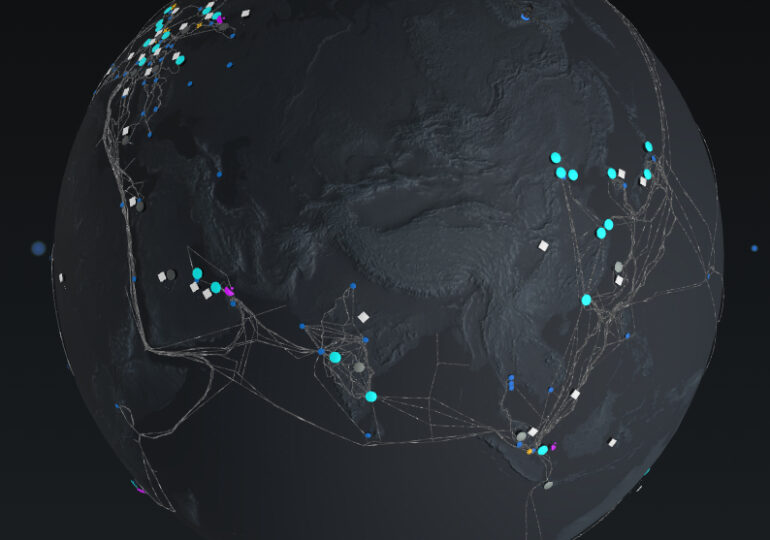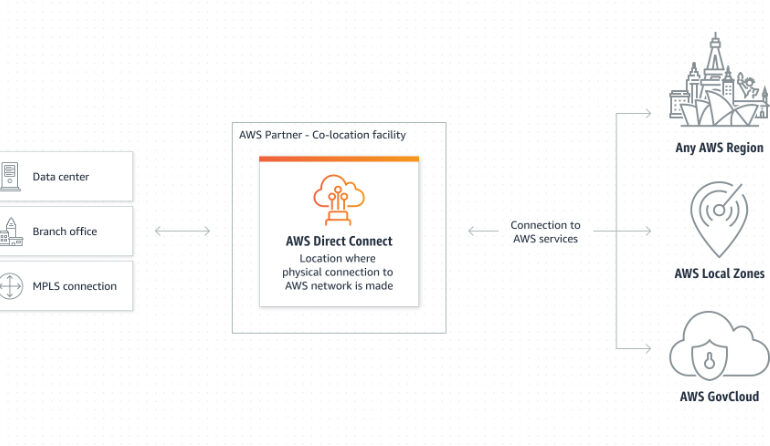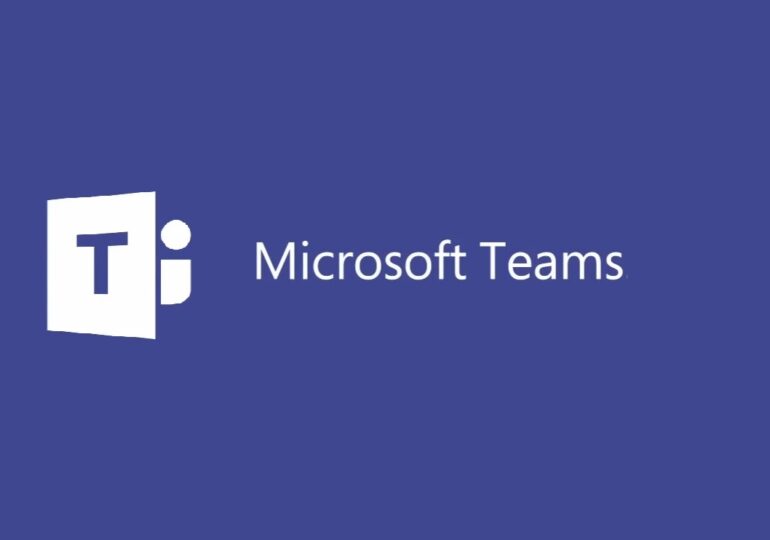Why are Peering and Network Geographic reach important when choosing a supplier for Internet Access and IP Transit services?

When it comes to choosing a supplier for Internet Access and IP Transit services, the importance of peering and network geographic reach cannot be understated. In today’s digitally driven world, where businesses rely heavily on connectivity and data transfer, having a robust and well-connected network infrastructure is essential.
Peering refers to the direct connection between networks, allowing for faster and more efficient data transfer. With peering, traffic between networks stays within the peering relationship rather than being routed through multiple providers. This results in lower latency, improved network performance, and reduced costs.
Network geographic reach, on the other hand, refers to the extent of a network’s coverage across different physical locations. A supplier with a broad geographic reach ensures greater reliability and redundancy, as data can be routed through multiple points of presence (POPs) in different regions. This is especially crucial for businesses with a global presence or those that require low-latency connections to various markets.
In this article we will discuss the following important following topics:
- Importance of peering for internet access and IP transit services
- Benefits of peering for businesses
- Network geographic reach and its impact on Internet access and IP transit services
- Factors to consider when choosing a supplier for internet access and IP transit services
- Evaluating peering agreements and network geographic coverage
- Case studies: How peering and network geographic reach have impacted businesses
- Best practices for selecting a supplier with strong peering and network geographic reach
- The role of quality of service (QoS) in peering and network geographic reach
Importance of peering for internet access and IP transit services
Peering plays a critical role in ensuring smooth and efficient data transfer between networks. By establishing direct connections with other networks, peering eliminates the need for traffic to traverse multiple providers, resulting in lower latency and improved network performance. This is particularly important for businesses that rely on real-time applications, such as video conferencing, online gaming, or financial transactions.
In addition to faster data transfer speeds, peering also offers cost savings for businesses. When traffic is exchanged directly between networks, there are no additional fees associated with routing traffic through third-party providers. This can significantly reduce the operational costs associated with internet access and IP transit services.
Another advantage of peering is the increased control and flexibility it offers. By establishing direct connections, businesses have more control over their network traffic and can optimize routing to ensure the best possible performance. This level of control is especially crucial for businesses that have specific requirements, such as low-latency connections or the need to prioritize certain types of traffic.
Benefits of peering for businesses
Peering offers several benefits for businesses in terms of improved performance, cost savings, and enhanced control over network traffic. Let’s take a closer look at these benefits:
- Faster Data Transfer: Peering allows for direct and efficient data transfer between networks, resulting in lower latency and faster speeds. This is especially important for businesses that rely on real-time applications or require fast and reliable data transfer for their operations.
- Cost Savings: By bypassing third-party providers and establishing direct connections, businesses can reduce the costs associated with internet access and IP transit services. This can lead to significant cost savings, especially for businesses with high data transfer requirements.
- Increased Control: Peering gives businesses more control over their network traffic and allows them to optimize routing for better performance. This level of control is crucial for businesses that have specific requirements or need to prioritize certain types of traffic, such as voice or video data.
- Improved Reliability: Peering enhances network reliability by reducing the number of hops and potential points of failure. With direct connections, businesses can ensure that their data is transferred through the most efficient and reliable routes, minimizing the risk of disruptions or downtime.
Overall, peering offers businesses a range of benefits, from improved performance and cost savings to increased control and reliability. By choosing a supplier with strong peering agreements, businesses can maximize these benefits and ensure a seamless online experience for their customers.
Network geographic reach and its impact on internet access and IP transit services
The geographic reach of a network plays a crucial role in internet access and IP transit services. A supplier with a broad network footprint can offer several advantages to businesses, including:
- Redundancy and Resilience: With a network that spans multiple physical locations, a supplier can offer redundancy and resilience in case of network failures or disruptions. This means that if one point of presence (POP) goes down, traffic can be rerouted through alternative routes, minimizing the impact on business operations.
- Low-Latency Connections: For businesses that require low-latency connections, a supplier with a wide geographic reach can ensure that data is transferred through the shortest and fastest routes. This is particularly important for industries such as finance, gaming, or healthcare, where even milliseconds can make a significant difference.
- Global Presence: Businesses with a global presence require connectivity to various markets and regions. A supplier with a wide network footprint can provide the necessary connectivity and ensure seamless data transfer between different locations. This is crucial for businesses that rely on international collaborations, data exchange, or customer engagement.
- Scalability and Flexibility: A supplier with a broad network geographic reach can easily scale and accommodate the growing needs of businesses. Whether it’s expanding into new markets or handling increased data traffic, a well-connected network can provide the necessary scalability and flexibility.
In summary, network geographic reach is critical for businesses that require reliable and low-latency internet access and IP transit services. By choosing a supplier with an extensive network footprint, businesses can ensure redundancy, low-latency connections, global connectivity, and scalability.
Factors to consider when choosing a supplier for internet access and IP transit services
Choosing the right supplier for internet access and IP transit services is a crucial decision for businesses. To make an informed choice, businesses should consider several factors:
- Peering Agreements: Evaluate the supplier’s peering agreements and relationships with other networks. Strong peering agreements ensure faster and more efficient data transfer, as well as cost savings.
- Network Coverage: Assess the supplier’s network coverage across different regions and markets. A broad network footprint ensures reliability, redundancy, and low-latency connections.
- Quality of Service (QoS): Consider the supplier’s commitment to delivering high-quality service. This includes factors such as network availability, latency, packet loss, and customer support.
- Scalability and Flexibility: Evaluate the supplier’s ability to scale and accommodate growing business needs. This includes considerations such as available bandwidth, capacity planning, and the ability to handle increased traffic.
- Security and Privacy: Ensure that the supplier has robust security measures in place to protect data and comply with industry standards and regulations.
By carefully evaluating these factors, businesses can make an informed decision and choose a supplier that best meets their internet access and IP transit requirements.
Evaluating peering agreements and network geographic coverage
When evaluating peering agreements and network geographic coverage, businesses should consider several key aspects:
- Peering Relationships: Assess the supplier’s peering relationships and agreements with other networks. Look for strong and diverse peering relationships, as this will ensure efficient data transfer and reduced reliance on third-party providers.
- Internet Exchange Points (IXPs): Consider the supplier’s presence in major internet exchange points. IXPs serve as hubs for network interconnections and facilitate efficient data exchange between networks.
- Geographic Reach: Evaluate the supplier’s network coverage across different regions and markets. Look for a broad geographic reach to ensure redundancy, low-latency connections, and global connectivity.
- Network Capacity: Assess the supplier’s network capacity and ability to handle peak traffic demands. This includes considerations such as available bandwidth, capacity planning, and the ability to scale as business needs evolve.
- Service Level Agreements (SLAs): Review the supplier’s SLAs to ensure they align with business requirements. SLAs should cover aspects such as network availability, latency, packet loss, and customer support.
By carefully evaluating these aspects, businesses can gain a deeper understanding of a supplier’s peering agreements and network geographic coverage, enabling them to make an informed decision.
Case studies: How peering and network geographic reach have impacted businesses
To illustrate the impact of peering and network geographic reach on businesses, let’s explore a few case studies:
- Company A: Company A is a global e-commerce platform that relies heavily on fast and reliable data transfer to handle customer orders, process payments, and deliver a seamless online shopping experience. By choosing a supplier with strong peering agreements and an extensive network footprint, Company A was able to reduce latency, improve website performance, and ensure timely order processing, leading to higher customer satisfaction and increased sales.
- Company B: Company B is a multinational financial institution that requires low-latency connections and secure data transfer for its trading operations. By partnering with a supplier that had a wide network geographic reach and presence in major financial centres, Company B was able to achieve faster trade execution, minimize slippage, and ensure the security of sensitive financial data, giving them a competitive edge in the market.
- Company C: Company C is a cloud-based software provider that serves customers across different industries and regions. By selecting a supplier with a broad network footprint, Company C was able to offer its customers low-latency access to their cloud-based applications, ensure data sovereignty compliance, and quickly scale their services to meet growing customer demands.
These case studies highlight the tangible benefits that peering and network geographic reach can bring to businesses across various industries, including improved performance, customer satisfaction, competitive advantage, and scalability.
Best practices for selecting a supplier with strong peering and network geographic reach
To select a supplier with strong peering and network geographic reach, businesses should follow these best practices:
- Research and Compare: Conduct thorough research and compare different suppliers based on their peering agreements, network coverage, quality of service, scalability, security measures, and customer reviews.
- Assess Peering Relationships: Evaluate the supplier’s peering relationships and agreements with other networks. Look for strong and diverse peering relationships, as this indicates a well-connected network infrastructure.
- Consider Network Coverage: Assess the supplier’s network coverage across regions and markets that are relevant to your business. Consider factors such as redundancy, low-latency connections, and global presence.
- Evaluate Scalability: Ensure that the supplier can accommodate your business’s growing needs in terms of bandwidth, capacity, and traffic management.
- Review SLAs: Carefully review the supplier’s SLAs to ensure they align with your business requirements in terms of network availability, latency, packet loss, and customer support.
- Seek Recommendations: Seek recommendations from industry peers or consult with experts who have experience in selecting suppliers for internet access and IP transit services.
By following these best practices, businesses can make an informed decision and choose a supplier that offers strong peering agreements and network geographic reach, maximizing the benefits of internet access and IP transit services.
The role of quality of service (QoS) in peering and network geographic reach
Quality of Service (QoS) plays a crucial role in ensuring smooth and reliable data transfer in peering and network geographic reach. QoS refers to the ability to prioritize certain types of traffic, allocate resources effectively, and maintain a high level of performance.
In the context of peering, QoS allows businesses to prioritize critical traffic, such as voice or video data, ensuring that it is delivered with minimal delay or packet loss. This is particularly important for real-time applications that require low-latency connections and high-quality audio or video streams.
Similarly, in the context of network geographic reach, QoS ensures that data is transferred efficiently and reliably across different regions. By allocating resources effectively and optimizing routing, QoS can minimize latency, ensure data integrity, and deliver a consistent user experience.
To achieve effective QoS, businesses should work closely with their chosen supplier to define their specific requirements and implement appropriate traffic management policies. This may involve setting priorities for different types of traffic, implementing traffic shaping or bandwidth allocation measures, and monitoring network performance to identify and resolve potential bottlenecks.
By prioritizing QoS in both peering and network geographic reach, businesses can ensure a seamless and high-quality online experience for their customers, improving satisfaction and driving business growth.
Conclusion: Maximizing the benefits of peering and network geographic reach in internet access and IP transit services
In today’s digitally driven world, businesses rely heavily on internet access and IP transit services to connect with their customers, partners, and employees. The choice of a supplier for these services is crucial, and considering factors such as peering agreements and network geographic reach can significantly impact the performance, reliability, and cost-effectiveness of these services.
By choosing a supplier with strong peering agreements and an extensive network footprint, businesses can enjoy faster and more reliable internet access and IP transit services. This not only enhances their operational efficiency but also helps deliver a seamless online experience to their customers. Whether it’s faster data transfer, cost savings, increased control, or global connectivity, peering and network geographic reach offer a multitude of benefits that can drive business success.
In conclusion, businesses should carefully evaluate their requirements, research different suppliers, and follow best practices to select a supplier that offers strong peering agreements and network geographic reach. By doing so, businesses can maximize the benefits of internet access and IP transit services, stay ahead of the competition, and meet the evolving demands of the digital age.








































